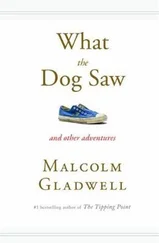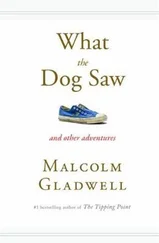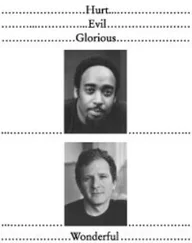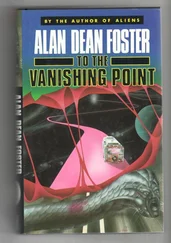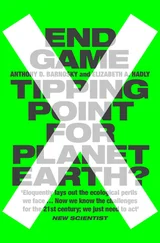Malcolm Gladwell - The Tipping Point
Здесь есть возможность читать онлайн «Malcolm Gladwell - The Tipping Point» весь текст электронной книги совершенно бесплатно (целиком полную версию без сокращений). В некоторых случаях можно слушать аудио, скачать через торрент в формате fb2 и присутствует краткое содержание. Город: Boston, New York, London, Год выпуска: 2000, ISBN: 2000, Издательство: LITTLE, BROWN AND COMPANY, Жанр: Культурология, Психология, на английском языке. Описание произведения, (предисловие) а так же отзывы посетителей доступны на портале библиотеки ЛибКат.
- Название:The Tipping Point
- Автор:
- Издательство:LITTLE, BROWN AND COMPANY
- Жанр:
- Год:2000
- Город:Boston, New York, London
- ISBN:0-316-31696-2
- Рейтинг книги:3 / 5. Голосов: 1
-
Избранное:Добавить в избранное
- Отзывы:
-
Ваша оценка:
- 60
- 1
- 2
- 3
- 4
- 5
The Tipping Point: краткое содержание, описание и аннотация
Предлагаем к чтению аннотацию, описание, краткое содержание или предисловие (зависит от того, что написал сам автор книги «The Tipping Point»). Если вы не нашли необходимую информацию о книге — напишите в комментариях, мы постараемся отыскать её.
The Tipping Point — читать онлайн бесплатно полную книгу (весь текст) целиком
Ниже представлен текст книги, разбитый по страницам. Система сохранения места последней прочитанной страницы, позволяет с удобством читать онлайн бесплатно книгу «The Tipping Point», без необходимости каждый раз заново искать на чём Вы остановились. Поставьте закладку, и сможете в любой момент перейти на страницу, на которой закончили чтение.
Интервал:
Закладка:
I have given this test to at least a dozen groups of people. One was a freshman World Civilizations class at City College in Manhattan. The students were all in their late teens or early twenties, many of them recent immigrants to America, and of middle and lower income. The average score in that class was 20.96, meaning that the average person in the class knew 21 people with the same last names as the people on my list. I also gave the test to a group of health educators and academics at a conference in Princeton, New Jersey This group were mostly in their forties and fifties, largely white, highly educated — many had Ph.D.'s — and wealthy. Their average score was 39. Then I gave the test to a relatively random sample of my friends and acquaintances, mostly journalists and professionals in their late twenties and thirties. The average score was 41. These results shouldn't be all that surprising. College students don't have as wide a circle of acquaintances as people in their forties. It makes sense that between the ages of twenty and forty the number of people you know should roughly double, and that upper-income professionals should know more people than lower-income immigrants. In every group there was also quite a range between the highest and the lowest scorers. That makes sense too, I think. Real estate salesmen know more people than computer hackers. What was surprising, though, was how enormous that range was. In the college class, the low score was 2 and the high score was 95. In my random sample, the low score was 9 and the high score was 118. Even at the conference in Princeton, which was a highly homogenous group of people of similar age, education, and income — who were all, with a few exceptions, in the same profession — the range was enormous. The lowest score was 16. The highest score was 108. All told. I have given the test to about 400 people. Of those, there were two dozen or so scores under 20, eight over 90, and four more over 100. The other surprising thing is that I found high scorers in every social group I looked at. The scores of the students at City College were less, on average, than adult scores. But even in that group there are people whose social circle is four or five times the size of other people's. Sprinkled among every walk of life, in other words, are a handful of people with a truly extraordinary knack of making friends and acquaintances. They are Connectors.
One of the highest scorers on my acquaintance survey was a man named Roger Horchow, who is a successful businessman from Dallas. Horchow founded the Horchow Collection, a high-end mail order merchandise company. He has also enjoyed considerable success on Broadway, backing such hits as Les Miserables and Phantom of the Opera and producing the award-winning Gershwin musical Crazy for You. I was introduced to Horchow through his daughter, who is a friend of mine, and I went to see him in his Manhattan pied-a-terre, an elegant apartment high above Fifth Avenue. Horchow is slender and composed. He talks slowly, with a slight Texas drawl. He has a kind of wry, ironic charm that is utterly winning. If you sat next to Roger Horchow on a plane ride across the Atlantic, he would start talking as the plane taxied to the runway, you would be laughing by the time the seatbelt sign was turned off, and when you landed at the other end you'd wonder where the time went. When I gave Horchow the list of names from the Manhattan directory, he went through the list very quickly, muttering names under his breath as his pencil skimmed the page. He scored 98. I suspect that had I given him another 10 minutes to think, he would have scored even higher.
Why did Horchow do so well? When I met him, I became convinced that knowing lots of people was a kind of skill, something that someone might set out to do deliberately and that could be perfected, and that those techniques were central to the fact that he knew everyone. I kept asking Horchow how all of the connections in his life had helped him in the business world, because I thought that the two things had to be linked, but the questions seemed to puzzle him. It wasn't that his connections hadn't helped him. It was that he didn't think of his people collection as a business strategy. He just thought of it as something he did. It was who he was. Horchow has an instinctive and natural gift for making social connections. He's not aggressive about it. He's not one of those overly social, back-slapping types for whom the process of acquiring acquaintances is obvious and self-serving. He's more an observer, with the dry, knowing manner of someone who likes to remain a little bit on the outside. He simply likes people, in a genuine and powerful way, and he finds the patterns of acquaintanceship and interaction in which people arrange themselves to be endlessly fascinating. When I met with Horchow, he explained to me how he won the rights to revive the Gershwin musical Girl Crazy as Crazy for You. The full story took twenty minutes. This is just a portion. If it seems at all calculating, it shouldn't. Horchow told this story with a gentle, self-mocking air. He was, I think, deliberately playing up the idiosyncrasies of his personality. But as a portrait of how his mind works — and of what makes someone a Connector — I think it's perfectly accurate:
I have a friend named Mickey Shannon, who lives in New York. He said I know you love Gershwin. I have met George Gershwin's old girlfriend. Her name is Emily Paley. She was also the sister of Ira Gershwin's wife, Lenore. She lives in the Village and she has invited us to dinner. So anyway, I met Emily Paley, and I saw a picture Gershwin had painted of her. Her husband, Lou Paley, wrote with Ira Gershwin and George Gershwin early on, when Ira Gershwin still called himself Arthur Francis. That was one link…
I had lunch with a fellow called Leopold Gadowsky, who is the son of Frances Gershwin, George Gershwin's sister. She married a composer named Gadowsky. Arthur Gershwin's son was also there. His name is Mark Gershwin. So they said — well, why should we let you have the rights to Girl Crazy ? Who are you? You've never been in the theater. So then I started pulling out my coincidences. Your aunt, Emily Paley. I went to her house. The picture with her in the red shawl — you've seen that picture? I pulled out all the little links. Then we all went to Hollywood and we went over to Mrs. Gershwin's house and I said, I'm so happy to meet you. I knew your sister. I loved your husband's work. Oh, and then I pulled out my Los Angeles friend. When I was at Neiman Marcus, a lady wrote a cookbook. Her name was Mildred Knopf. Her husband was Edwin Knopf, the movie producer. He did Audrey Hepburn's stuff. His brother was the publisher. We introduced her cookbook in Dallas, and Mildred became a good friend. We just loved her, and when I was in L.A. I would call on her. I always keep up with people. Well, it turns out Edwin Knopf was George Gershwin's closest friend. They had Gershwin's pictures all over their house. He was with Gershwin when he wrote "Rhapsody in Blue" in Asheville, North Carolina. Mr. Knopf died. But Mildred's still living. She's ninety-eight now. So when I went to see Lee Gershwin, we mentioned that we had just been to see Mildred Knopf. She said — you know her? Oh, why haven't we met before? She gave us the rights immediately.
In the course of our conversation, Horchow did this over and again, delighting in tying together the loose ends of a lifetime. For his seventieth birthday, he attempted to track down a friend from elementary school named Bobby Hunsinger, whom he hadn't seen in sixty years. He sent letters to every Bobby Hunsinger he could find, asking them if they were the Hunsinger who lived at 4501 First Lane in Cincinnati.
This is not normal social behavior. It's a little unusual. Horchow collects people the same way others collect stamps. He remembers the boys he played with sixty years ago, the address of his best friend growing up, the name of the man his college girlfriend had a crush on when she spent her junior year overseas. These details are critical to Horchow. He keeps on his computer a roster of 1,600 names and addresses, and on each entry is a note describing the circumstances under which he met the person. When we were talking, he took out a little red pocket diary. "If I met you and like you and you happen to mention your birthday, I write it in and you'll get a birthday card from Roger Horchow. See here — Monday was Ginger Broom's birthday, and the Wittenbergs' first anniversary. And Alan Schwartz's birthday is Friday and our yard man's is Saturday."
Читать дальшеИнтервал:
Закладка:
Похожие книги на «The Tipping Point»
Представляем Вашему вниманию похожие книги на «The Tipping Point» списком для выбора. Мы отобрали схожую по названию и смыслу литературу в надежде предоставить читателям больше вариантов отыскать новые, интересные, ещё непрочитанные произведения.
Обсуждение, отзывы о книге «The Tipping Point» и просто собственные мнения читателей. Оставьте ваши комментарии, напишите, что Вы думаете о произведении, его смысле или главных героях. Укажите что конкретно понравилось, а что нет, и почему Вы так считаете.



